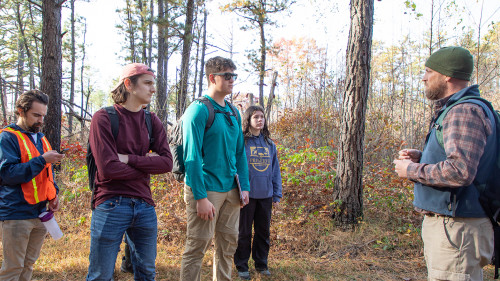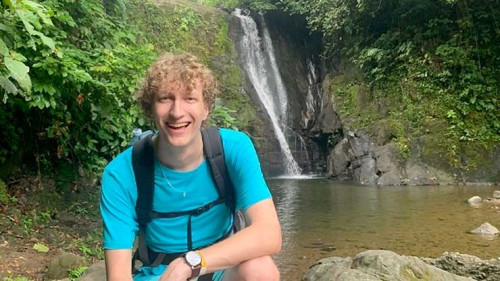
The road salt scattered by trucks to keep winter roads safer aren’t benefiting local waterways - and the negative effects seem to last for months after the freezin’ season is over.
Kate Meierdiercks, Ph.D., associate professor and chair of environmental studies and sciences, and her Siena students have been researching the impact of road salt runoff on the Hudson River watershed, which stretches from the Adirondack Mountains down to New York City.
The study recently concluded after two years, and involved colleges and institutes throughout the Hudson Valley. It was funded in part by a research grant from the New York State Water Resources Institute.
Researchers took water samples from throughout the watershed and examined how runoff impacted its quality.
“We noted that the impact from road salt runoff seems to be increasing overall, and that the effects can be observed for several months after spring melt,” said Meierdiercks. “It can be detected well into the summer, and it ultimately impacts stream health and the public health. The hypothesis here is that the salt stays in the environment, impacting groundwater and rivers long after snow has melted.”
She said road salt can make its way into drinking water, and not only affects how water tastes, but can also be linked to corrosivity and elevated lead levels.
The study issued some preliminary recommendations for municipalities, water management organizations and environmentally conscious citizens. There are alternatives to road salt such as vegetable-based melters and “smart salts,” even some that are made from molasses. But when switching off of traditional road salt, it may take a while for the benefits to be measured.
“Even when communities stop using road salt, they may not see the benefits right away,” said Meierdiercks. “That could potentially discourage people from halting its use. Studies like this one, that use long-term data sets, are needed to better understand how the persistent use of alternatives can lead to a measurable reduction in salt in the watershed.”
Eileen Fitzgerald ’20 and Catherine Hill ’20, and more recently Lauren Gallagher ’20 and Anna Kuhne ’20, were all involved with the research.
“Road salts are not the first thing that comes to most people's minds when they think of water contaminants, and yet they are so commonly used in New York winters. This is what made researching this so cool, because it is something so pervasive yet not well understood. This research project gave me the chance to work with statistics and mapping software, get a lot of data management experience, and contribute to a still growing field of scientific inquiry.”
“The work I did with Dr. M was great. It made me want to continue learning more post-graduate about humans and our environmental impact,” said Kuhne. “Inspired by this experience, I will be moving to Colorado in August to work full time for the Thunderbasin Grassland prairie ecosystem association and ARS, to continue grassland ecology to help people better understand the importance of grassland ecosystems.”

